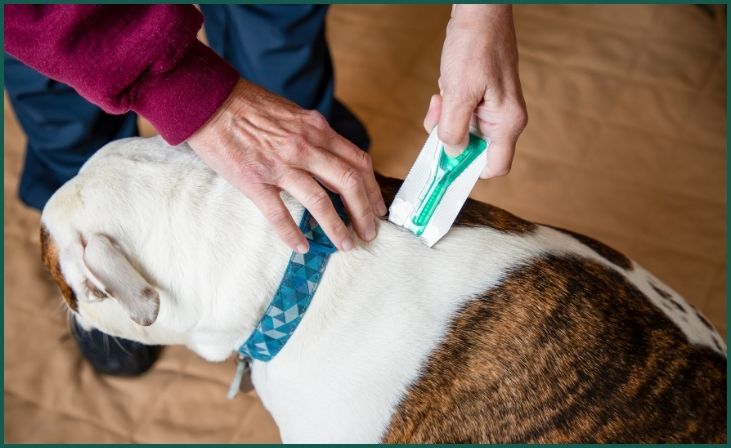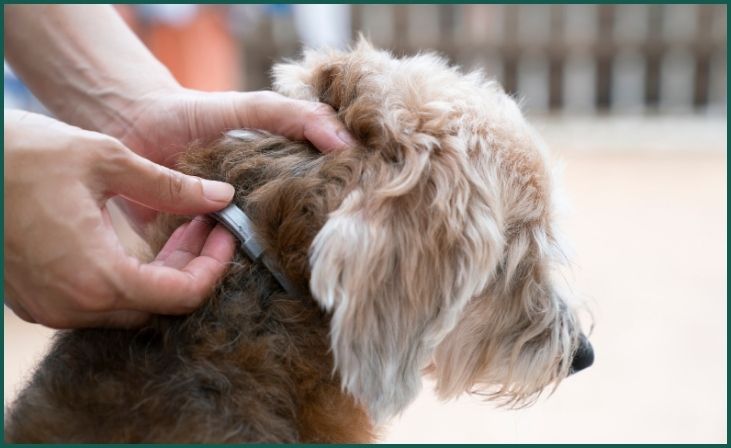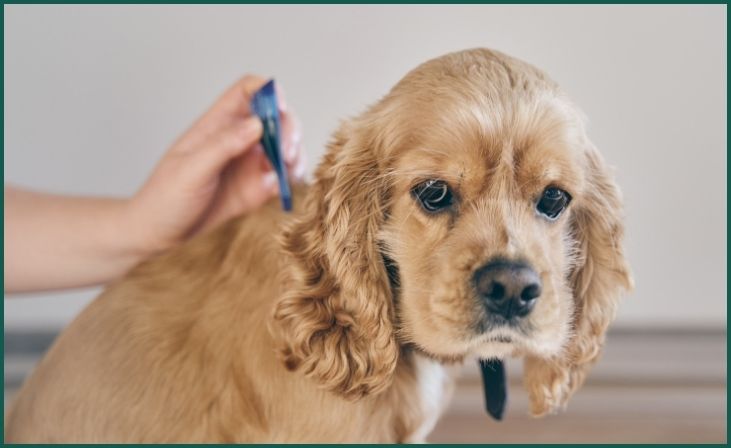Ensuring the health and happiness of our beloved canine companions is a responsibility that every pet owner takes to heart. Among the many concerns we face, preventing fleas and ticks ranks high on the list. These tiny pests not only cause discomfort to our furry friends but also pose serious health risks. In this comprehensive guide, we’ll delve into seven effective tips to protect your dog from fleas and ticks. From creating a flea and tick-free environment to choosing the right preventative products, we’ll explore proactive measures to safeguard your pet’s well-being. With the knowledge and tools provided, you’ll be equipped to tackle this common challenge head-on, ensuring a safe and comfortable life for your canine companion.
Table of Contents
ToggleTips to Prevent Fleas and Ticks on Dogs
1. Regular Grooming:

Regular grooming sessions are essential for maintaining your dog’s overall health and hygiene while also serving as an opportunity to inspect for fleas and ticks. During grooming, use a fine-toothed comb to carefully comb through your dog’s fur, paying particular attention to areas where parasites are likely to hide, such as behind the ears, around the neck, and along the tail. By incorporating grooming into your routine, you can effectively detect and remove any fleas or ticks before they have a chance to infest your pet. Additionally, grooming promotes bonding between you and your dog and helps keep their coat healthy and shiny.
2. Topical Treatments:

Topical treatments are a popular and effective method for preventing fleas and ticks on dogs. These treatments typically come in the form of spot-on solutions that are applied directly to your pet’s skin, usually between the shoulder blades or along the back. The active ingredients in these treatments are designed to kill and repel fleas and ticks, providing long-lasting protection for your furry friend. It’s essential to follow the instructions provided by the manufacturer and consult with your veterinarian to ensure you’re using the right product for your dog’s size and age.
3. Oral Medications:

Oral medications are another option for preventing fleas and ticks on dogs, offering convenience and efficacy. These medications come in chewable tablet form and are administered once a month. They work by disrupting the flea and tick lifecycle, preventing these parasites from reproducing and infesting your pet. Oral medications are typically prescribed by a veterinarian based on your dog’s individual needs and health status. While oral medications are generally safe and well-tolerated, it’s crucial to follow your veterinarian’s recommendations and monitor your dog for any potential side effects.
Also Read : The 8 Most Popular Dog Breeds in the U.S.
4. Flea and Tick Collars:

Flea and tick collars are designed to provide continuous protection against these parasites. These collars contain active ingredients that are slowly released over time, creating a barrier that repels fleas and ticks. When choosing a flea and tick collar for your dog, ensure it fits properly and is comfortable for your pet to wear. It’s essential to replace the collar as recommended by the manufacturer to maintain its effectiveness. Flea and tick collars are a convenient option for pet owners looking for long-lasting protection without the hassle of monthly treatments.
Don't just scroll, subscribe!
BuzzTrail's unique web-stories are the cure for boredom you've been waiting for.
5. Environmental Control:

Maintaining a clean and tidy environment is crucial in preventing flea and tick infestations in your home. Regular vacuuming, especially in areas where your pet spends time, such as carpets, rugs, and furniture, can help remove flea eggs, larvae, and adults. Washing your pet’s bedding regularly in hot water can also help eliminate any fleas or ticks that may be present. Additionally, treating outdoor areas where fleas and ticks thrive, such as yards and gardens, can further reduce the risk of infestation. By incorporating environmental control measures into your routine, you can create a flea and tick-free environment for your dog.
6. Natural Remedies:

Natural remedies, such as essential oils and herbal sprays, are gaining popularity as alternative methods for preventing fleas and ticks on dogs. Ingredients like cedarwood, peppermint, and lavender are known for their repellent properties and can be used to create homemade flea and tick sprays. However, it’s essential to exercise caution when using natural remedies, as some ingredients may be harmful to pets if ingested or applied incorrectly. Always consult with your veterinarian before using any natural products on your dog to ensure they are safe and effective.
7. Regular Veterinary Check-ups:

Routine visits to the veterinarian are essential for maintaining your dog’s overall health and well-being. During these check-ups, your veterinarian can conduct comprehensive examinations to detect any signs of fleas or ticks early on. They can also recommend the most appropriate flea and tick prevention methods based on your dog’s individual needs and lifestyle. Additionally, your veterinarian can provide guidance on other aspects of your dog’s care, such as nutrition, exercise, and parasite control. By scheduling regular veterinary check-ups, you can ensure that your furry friend receives the best possible care and remains healthy and happy for years to come.
Also Read : The 7 Best Hot Dogs in Every State
8. Educate Yourself:

Knowledge is power when it comes to preventing fleas and ticks on dogs. Take the time to educate yourself about these parasites, their lifecycle, and the best prevention methods available. Stay informed about the latest advancements in flea and tick control, including new products and treatment options. Additionally, learn how to recognize the signs of flea and tick infestations in your dog and how to address them effectively. By arming yourself with knowledge, you can be proactive in protecting your furry friend from these pesky parasites and ensuring their health and well-being.
Conclusion
Preventing fleas and ticks on dogs demands dedication and knowledge, but the rewards are immeasurable. By embracing the seven tips outlined in this guide, you’re not just protecting your pet; you’re fostering their well-being and ensuring a happier, healthier life together. Remember, vigilance is key—regular grooming, veterinary check-ups, and a clean environment are your best allies in the fight against these pesky parasites. Stay informed, stay proactive, and cherish the bond you share with your furry companion. With the right preventive measures in place, you can enjoy countless adventures with your dog, free from the worries of flea and tick infestations.
FAQs
Are there any preventive measures I can take to protect my dog while outdoors?
Are there any preventive measures I can take to protect my dog while outdoors?
When spending time outdoors, consider using flea and tick repellent products specifically designed for dogs. Additionally, avoid walking your dog in areas known to be infested with fleas and ticks.
Are natural remedies effective in preventing fleas and ticks?
Are natural remedies effective in preventing fleas and ticks?
While some natural remedies may offer limited effectiveness, they’re often not as reliable as veterinary-approved preventative products. Consult with your veterinarian before using any natural remedies.

